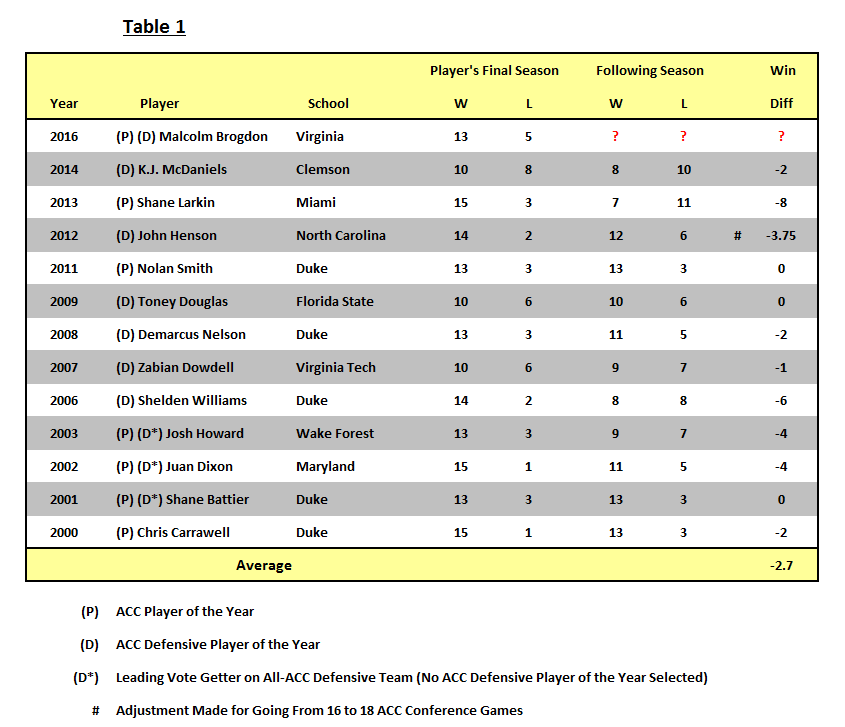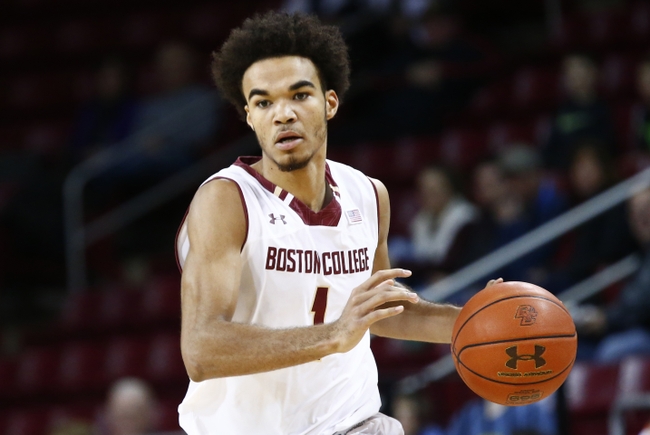Posted by Brad Jenkins (@bradjenk) on October 17th, 2016
The last three seasons have been historically good for Virginia basketball in winning 89 games, claiming an ACC Championship, and earning two NCAA #1 seeds along the way. But for that level of excellence to continue this season, the Cavaliers have an enormous pair of shoes to fill. Four seniors departed the program, and one of those, Malcolm Brogdon, experienced one of the most decorated seasons in recent ACC history. Not only was he voted the ACC Player of the Year and the league’s top defender, the senior was also selected as a consensus All-American and the NABC National Defensive Player of the Year. Replacing a player of such high caliber on both ends of the floor will not be easy for head coach Tony Bennett, but just how hard will it turn out to be?

In 2015-16, Malcolm Brogdon became the first player to win ACC Player of the Year and ACC Defensive Player of the Year in the same season. (USA Today Images)
To gauge what Bennett is facing in replacing Brogdon, we looked at recent conference history. Since the conference began selecting an All-ACC Defensive Team after the 1999-2000 season, there have been 26 players who were on the list of top-five league defenders and also named First-Team All-ACC in the same year. Of those 26 stars, 13 were either the ACC Player of the Year and/or the league Defensive Player of the Year in that season (Table 1).

By comparing team records before and after the loss of the all-everything player, we see that a team has never improved its record afterward. Of course, none of these situations are exactly alike — talent returning or entering the program in the following season varies widely depending on the school. For instance, 2002 Duke without the services of NPOY Shane Battier started five future NBA players, including another NPOY in Jason Williams. In 2014 Miami’s Jim Larranaga not only lost Shane Larkin, but he also lost his other top five players as well. Virginia’s situation in the post-Brogdon year seems to fit somewhere in the middle of those extremes. The high quality of its newcomers may be enough to get them close to matching last season’s 13 league wins, but history appears to tell us that meeting last year’s win total is the ceiling for a team that loses such an elite all-around performer.
Read the rest of this entry »
| acc, feature, microsites
| Tagged: acc history, malcolm brogdon, tony bennett, virginia
Share this story















































